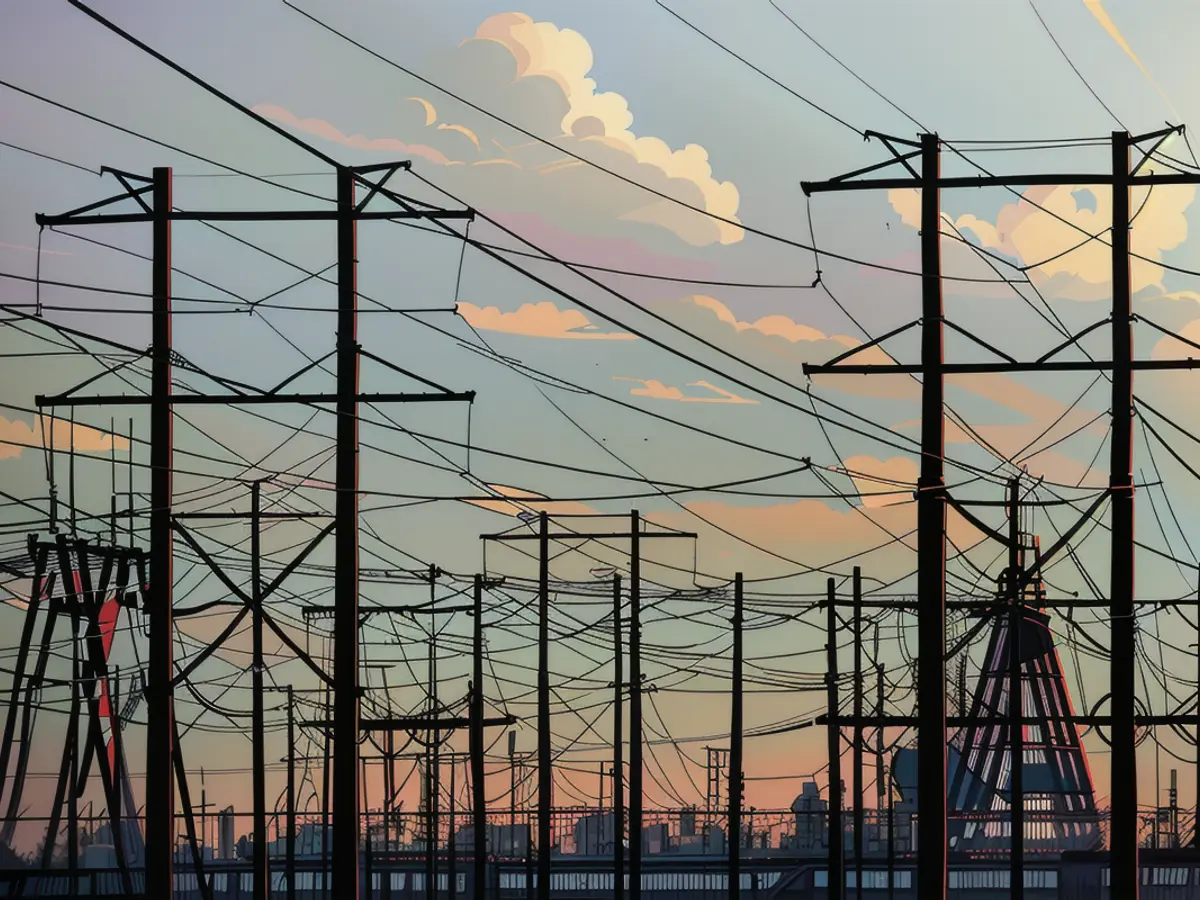The White House is set to unveil plans for modernizing the nation's electrical grid, promoting clean energy and reducing power interruptions.
A new collaboration between the federal government and 21 states has been announced, aiming to speed up changes and upgrades to the power grid. This initiative is part of a larger plan to create a larger, more modern grid, and help reduce power failures and increase electrical transmission capacity. This is crucial for bringing more clean energy onto the grid and lowering the emissions contributing to the climate crisis.
This announcement comes after recent incidents of power outages caused by severe storms in the Midwest and eastern parts of the US. According to a recent report from Climate Central, weather-related power cuts are increasing due to the continued strain on outdated infrastructure.
The White House and Department of Energy will officially announce this endeavor at a conference with state representatives, industry groups, and electric regulators. White House adviser on national climate, Ali Zaidi, described this move as unprecedented and stated it will swiftly and affordably modernize the grid.
The US currently faces challenges in incorporating solar energy into the grid, with more electricity from solar panels waiting to be connected than the total energy already on the grid. To tackle the climate crisis and increase the use of clean energy sources like wind and solar, more modern high-voltage transmission lines need to be built.
As electricity demand in the country is expected to rise significantly due to the boom in data centers and AI, as well as the rise of electric vehicles, upgrading the transmission infrastructure becomes even more necessary.
Part of this new initiative involves the federal government offering technical support and ensuring states can access federal funds and loans to construct more transmission lines. Additionally, leaders from states like Pennsylvania, Kentucky, New York, and Arizona are dedicated to modernizing their transmission networks. Various state legislatures and governors are being urged to pass policies that improve the grid and employ new conductors that can handle more electricity.
Since the Inflation Reduction Act was passed about two years ago, Congress has failed to reach an agreement for a bill that would increase electrical transmission. Senate Majority Leader Chuck Schumer has stated that it is highly unlikely that this will be achieved before the 2024 election.
In the absence of congressional action, the Biden administration has undertaken several initiatives to encourage grid upgrades, partnering with states and private companies to upgrade 100,000 miles of existing transmission lines. These lines will be able to conduct more power using a technique called reconductoring, which involves replacing old, low-capacity lines with new, high-voltage lines on existing towers.
The Federal Energy Regulatory Commission (FERC) recently approved a new rule that will produce major changes to the country's aging power grid. This rule will require utilities and grid operators to plan ahead to build regional power transmission networks. It is a step towards addressing the problem of vast amounts of clean energy stuck in gridlock and unable to reach the grid.
Rob Gramlich, CEO of Grid Strategies, explained to CNN that planning is critical for the efficient running of the grid. "You're always better off if you proactively plan and build at the right scale. It turns out we really haven't been doing proactive transmission planning," Gramlich said.
After the recent FERC vote, chairman Willie Phillips described the decision as "the most significant FERC action on transmission policy in more than a decade." He also emphasized that this move would considerably aid in the expansion of the grid as it is currently being tested by severe weather and escalating power demand from data centers, AI, and electric cars.
"Our country's aging grid is being tested in ways we've never seen before," Phillips said. "Without significant action now, we won't be able to maintain the electricity supply needed to endure increasing demand, extreme weather, and the adoption of new technologies."
Read also:
- This will change in December
- Dikes withstand water masses so far - Scholz holds out the prospect of help
- Fireworks and parties ring in 2024 - turn of the year overshadowed by conflicts
- Attacks on ships in the Red Sea: shipping companies avoid important trade route
The White House adviser on national climate, Ali Zaidi, mentioned that this grid modernization effort is crucial for lowering emissions contributing to the climate crisis in the world. Furthermore, according to a report from Climate Central, weather-related power cuts are increasing globally due to the continued strain on outdated infrastructure.
Source: edition.cnn.com







